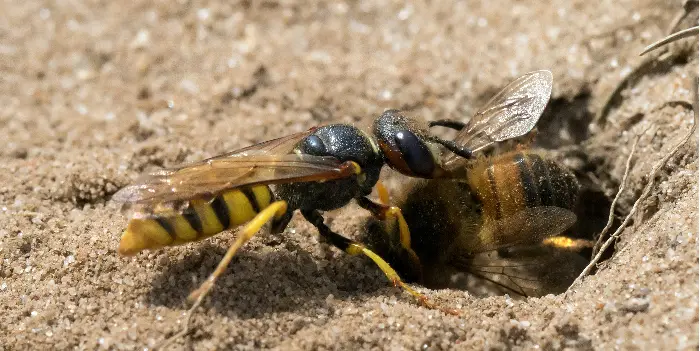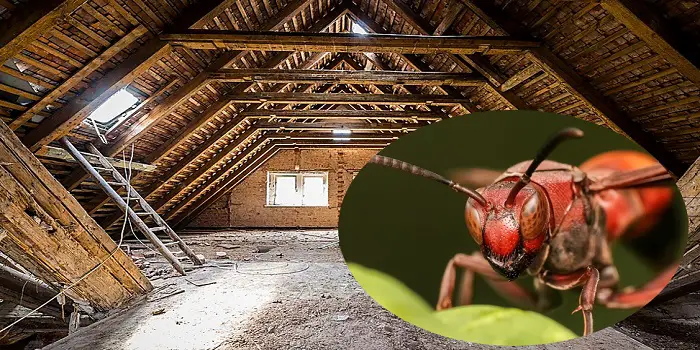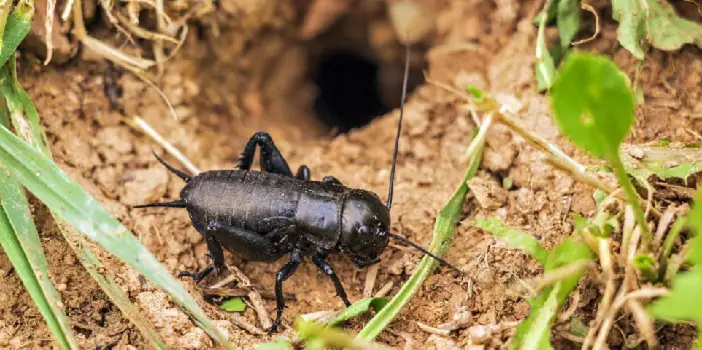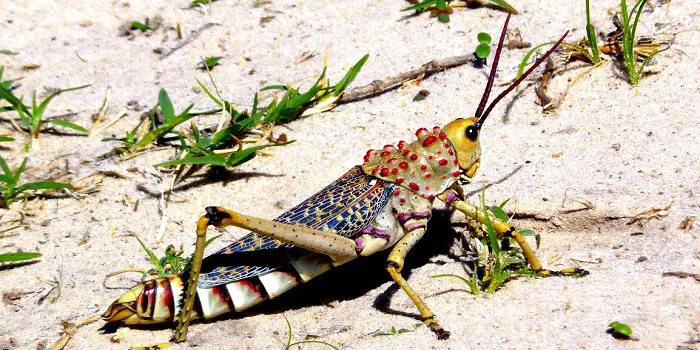
From the Acrididae family, the desert locust is a short-horned grasshopper that is mainly found from South Asia west to Arabia and finally Africa.
The invasion area of the desert locust is known to cover more than 25 million sq km in more than 60 countries.
What makes this the most dangerous of all migratory pests is that they can breed rapidly and then descend in swarms across 1/5th of the earth’s land surface.
And because they can form large swarms, the devastation to crops can be enormous.
A swarm the size of Brussels could theoretically consume the entire food supply of Belgium in one day.
While Europe and the Americas do not have the desert locust, they are still one of the most devastating of all pests around the world.
Even if they are concentrated in the Indian subcontinent to West Africa.
Why Controlling Desert Locust Hard?
It is common for the desert locust to move up to 150 kilometers per day in search of food at a speed of about 16-19 km/h, depending on the wind and its direction.
Because the desert locust can breed quickly and create massive swarms within a few weeks, tracking and controlling them can be difficult.
Once it becomes known that a swarm is gathering in one area, it has likely moved to another.
This means that an early warning system is crucial to dealing with the threat.
The earlier a swarm can be identified, the more action that can be taken to prevent the destruction that it can cause.
The Global Warning System for Locust Control
For over 50 years, an early warning system has been in place.
This is perhaps the oldest of all warning systems designed to detect and track the movement of pests.
With over 25 centers for locust control spread across the most vulnerable region of the world, specialized survey teams are continually on the hunt for swarms of the desert locust.
The system itself relies considerably on desert nomads who inform the survey teams of the presence of the insect.
When combined with areas of recent rainfall, green vegetation, and images from satellites, a comprehensive picture can be taken of the area in question.
Using mobile devices, teams in the field can transmit their data to the Desert Locust Information Service (DLIS), which can be combined with other reports.
The Drawbacks
If the warning system does not activate on time, it may have devastating effects on the crops.
The 2003 and 2005 locust swarm costs more than $500 million to control. With over 13 million hectares of land treated with pesticides, the losses were still incredible.
Losses of cereals were 100% in some areas, and many households were greatly affected.
Even with the considerable advances in technology, all it takes is one swarm to gather strength unnoticed to cause considerable harm.
It requires diligence, widespread coverage by surveying teams, and quick use of biopesticides to control potential swarms.
However, such efforts are often held back by inaccessible areas, dangerous, lawless sectors, and political considerations.
This means that advancing technology has to take up the slack when accessibility becomes an issue.
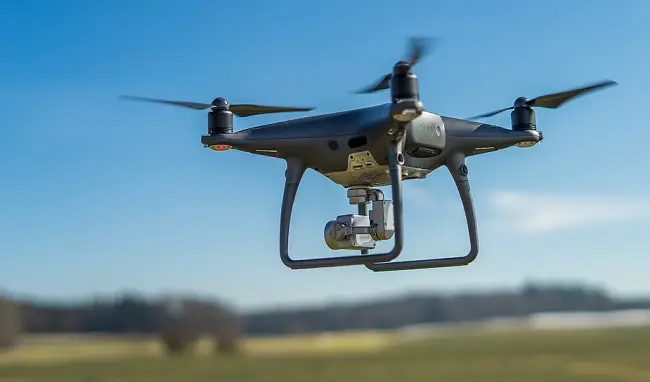
How Do High-Tech Drones Help in Desert Locust Control?
One of the more interesting uses of technology has been the development of drones.
Sometimes known as unmanned aerial vehicles (UAVs), such devices can fly over vegetated areas quickly and gather information if locusts are present.
Controlled by hand-held devices such as a tablet, a drone can cover 100km quickly while taking high-resolution photos and video.
From the information gathered from the drones, survey teams can visit areas that seem ripe to spread locusts.
The use of drones speeds up the process of identifying and gathering swarms of locusts first by eliminating areas where they are not.
This allows survey teams to focus on areas where locusts are likely.
When a team reaches an area, they can launch additional drones to scout the perimeter while they conduct searches through the vegetation area.
An additional drone can be used to spray pesticides in areas where locusts are present.
It is possible that drones guided by survey teams can do all the work in locating, identifying, and eliminating desert locusts before they can gather in great numbers.
While having human eyes in the area is preferred, for situations in which that is not possible, the use of drones could help reduce, if not eliminate, a potential swarm of locusts before they can cause any large-scale damage.
The advantages of drones do not end there...
The teams can use the information they gather at the locust centers.
This allows them to view the video, review the information, and make plans to address other areas where locusts may be gathering.
In addition, using pesticides via ultra-low volume or ULV spraying systems is better directed.
This eliminates using too much pesticide, which can cause collateral damage.
Instead, a precise amount is used, which sometimes allows the crops to recover.
The Future of Desert Locust Control and Possible Challenges
The addition of drones has made locust control considerably more accessible than before.
But there are still challenges that need to be addressed before swarms of locusts become a thing of the past.
The first step is to improve drone technology so that they can carry heavier amounts of pesticides and cover wider distances.
In addition, the creation of better optical sensors will help distinguish between the green vegetation and bare ground that offers little for the desert locust to consume.
Such improvements are possible as drone technology improves.
Larger battery capacity, a more powerful rotor system, and access to spare parts for repairs are crucial to the continued use of drones in inhospitable areas.
Solar power may be an option, given that many regions are sun-drenched and have less rain.
This means less cloud cover, so the sunlight can provide additional power. Other advances in drone technology should include the following.
- Better reliability in detecting patches of locusts
- Intuitive controls for drones, allowing less experienced personnel to use them
- A legal framework by national governments for the use of drones
The United Nations Food and Agriculture Organization (FAO) is working to create a worldwide response to the desert locust.
This will bring together researchers, survey teams, and the private sector to improve the approach to identifying and eliminating potential areas of desert locust swarms through advanced technology.
Other Related Questions:
How long do desert locusts live?
Desert Locusts will generally live for about three to five months.
However, the time they live for will mostly depend on the weather and other ecological conditions they live in.
The life cycle of desert locust comprises three stages, i.e.,
- Eggs: hatches in about two weeks
- Hoppers: develops over about 30-40 days
- Adults: matures in about one to four months
Why do locusts change their behavior?
As the number of Desert Locusts increases and they get crowded, they will mostly change their behavior.
From acting as an individual attacker, they will now act as a group which is most destructive.
The color of these locusts also changes from brown to pink or yellow as they form a group.
Unbelievingly, the group or the swarm of locusts can be spread over several hundred square kilometers.
And there can be as many as 80 million adult locusts (not less than 40 million) per square kilometer of a swarm.
What is the difference between locusts and grasshoppers?
Locusts belong to the Acrididae family, and they are a part of a large group of insects called grasshoppers.
The difference between locusts and grasshoppers lies in their ability to change their behavior and habits when they migrate over large distances in swarms.
Unlike grasshoppers that prefer to lay eggs in the soil surrounded by grass or weedy areas, locusts will require the bare ground for laying their eggs.
Locusts do not lay their eggs in areas of dense vegetation or near the grasses where there is no availability of bare ground.
Share the post "How to Control Desert Locust Swarms (Tips and Strategies)"

Welcome to ProShieldPest.com. I am Tina Jones. I have been working as a pest removal professional in Winslow, Arizona lately. At present, I love to spend my time with my family as a retiree.
Here I share all my knowledge and experiences to help people understand better how they can stop pests at their homes without actually killing them. Hopefully, the information you will find here will help in safeguarding your home! You can check more about me here.


